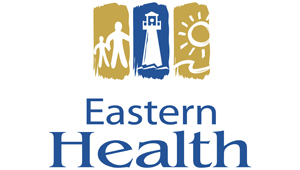Technology Against Stroke Crucial to Prevention
 The convergence of digital technology, neuroimaging and micromanufacturing has catapulted brain vascular technologies to the pinnacle of modern medicine. Technology has become the most vital element underpinning the visualization, navigation and manipulation of the human brain, and is indispensable for: 1) the advancing of stroke prevention, awareness and communication; and 2) the understanding and treatment of stroke syndromes.
The convergence of digital technology, neuroimaging and micromanufacturing has catapulted brain vascular technologies to the pinnacle of modern medicine. Technology has become the most vital element underpinning the visualization, navigation and manipulation of the human brain, and is indispensable for: 1) the advancing of stroke prevention, awareness and communication; and 2) the understanding and treatment of stroke syndromes.
“Because stroke attacks the brain, the very core of human existence, creativity and accomplishment, the affliction carries special gravity and distress for humans, who are often robbed by it of their most precious faculties,” said Jeffrey E. Thomas, M.D., F.A.A.N.S., F.A.C.S., founder and chairman of the Stroke Shield Foundation. Yet it is only recently that stroke has been treated as a medical emergency.
When symptoms of a possible stroke occur, 911 should be dialed immediately. Warning signs may include some or all of the following symptoms: Dizziness, nausea, or vomiting; unusually severe headache; confusion, disorientation or memory loss; numbness, weakness in an arm, leg or the face, especially on one side; abnormal or slurred speech; difficulty with comprehension; loss of vision or difficulty seeing; and loss of balance, coordination, or the ability to walk. The only FDA-approved drug therapy for stroke, tissue plasminogen activator (tPA), must be given within 4.5 hours of stroke onset to minimize the potentially catastrophic risk of brain hemorrhage.
Sobering Stroke Statistics
Stroke is the fourth leading cause of death in the U.S., accounting for 1 of every 19 deaths according to 2009 mortality data.
Worldwide, stroke is the second leading cause of death for people ages 60 and older.
Each year, of 795,000 people experiencing a new or recurrent stroke, approximately 610,000 of these are first attacks, and 185,000 are recurrent attacks.
Worldwide, nearly 6 million people die every year from stroke.
Stroke is a leading cause of serious long-term disability, with an estimated 5.4 million stroke survivors currently alive today.
In 2010, stroke cost about $73.7 billion in both direct and indirect costs in the U.S. alone.
Risk Factors
Major risk factors for stroke have been identified and well-studied. They include hypertension, diabetes, cigarette smoking, hyperlipidemia (elevated cholesterol levels) and family history. Obesity and heart disease (atrial fibrillation, valve disease) are also risk factors, and previous stroke is a very serious risk factor. About 25 percent of people who recover from their first stroke will have another stroke within five years. “It is important to note that these risk factors are modifiable. Theoretically, this knowledge should lead to a decrease rather than an increase in the incidence of stroke. Yet demographic changes in the population suggest an increase of 27 percent increase in the number of stroke patients per 1000 people in the 20-year period between 2000 and 2020,” said Dr. Thomas.
Technology Against Stroke
There is untapped potential in the development and research of telecommunications and internet-based and handheld digital device-based disease management platforms related to stroke prevention. Among these are Smartphone, videoconferencing and telemedicine. Research targeting scalable, web-based, digital interventions for at risk ischemic stroke populations should aim ultimately to minimize the necessity for emergency intervention.
